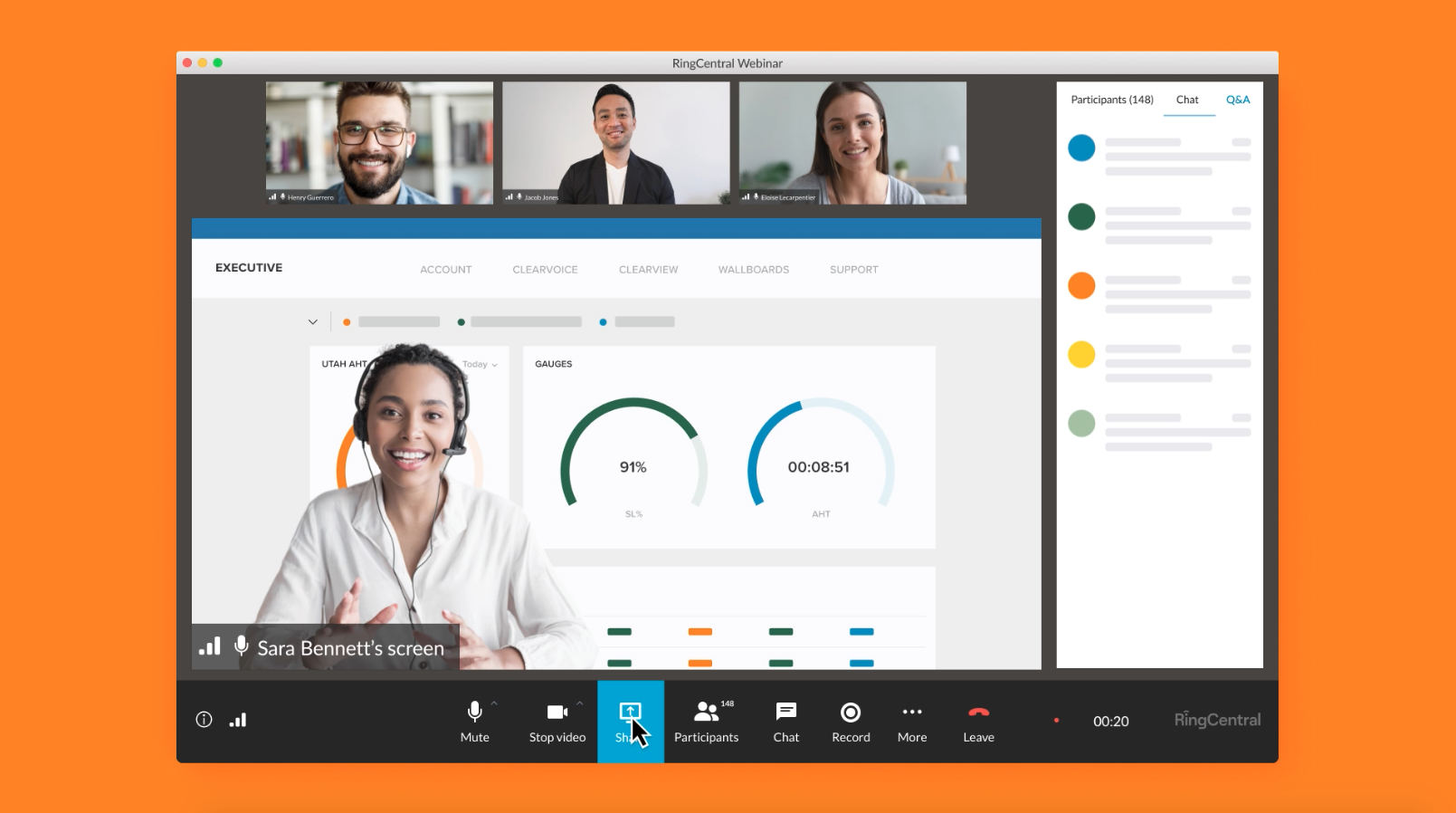With the business world bouncing back into action much has changed over the past two years. Remote and hybrid work has become more prevalent post the COVID-19 pandemic, and businesses have started adopting technology to bridge the physical distance that plagues our lives.
This transition would be a breeze for businesses that have always been tech-savvy. But for businesses just considering the shift, this may be a daunting experience for your employees and management.
To help make this transition, here’s a quick blog that covers everything you need to know and have to ensure a boost in your employee and financial productivity in 2023! So, let’s get started!
Five tips and tools businesses need to consider in 2023
1. Let work unite you
Whether your business picks a fully remote or hybrid model, it is crucial for work to unite you and your employees on a common front. Some ways businesses can ensure work unites them are:
- Keep employees in the loop: With things always up for change, ensure your employees know where things stand – operationally and non-operationally. This will give them the feeling of being secure, informed, and connected despite the distance.
- Encourage transparency and honesty: Being open and transparent with employees can help build trust and loyalty. Businesses can easily do this by conducting regular all-hands and virtual meetups. You can use these sessions to get to know your employees and also communicate internal information and updates that are useful for them.
- Provide training and support: Helping employees with ongoing training and support in any projects or problem areas they have can make them feel more confident and capable in their roles. Also, ensure employees always feel confident to go up to managers and management in case they have any worries.
When work becomes a uniting front for a business, it leaves less room for things like office politics and unproductivity to divide employees.
2. Empower your employees to give their best
With the ever-changing nature of remote and hybrid work, it is essential for businesses to provide their employees with everything they may need to feel equipt at work. Some of the essentials business owners and management must take care of are:
- Provide the necessary tools and resources: Ensuring that employees have the right tools and resources to do their job can help them feel more empowered and capable. This may include providing access to software, hardware, and other resources that facilitate remote and hybrid work.
- Encourage autonomy and self-management: Giving employees the freedom to manage their work and schedules can help them feel more empowered and responsible for their success. This can also help them figure out their day’s work based on when they feel most productive to get work done.
- Foster a sense of community: Creating a sense of connection among remote and hybrid employees can help them feel more supported and motivated. This can be achieved through regular communication, team-building activities, and other social interactions.
With the right tools and support, employees will take on any challenge head-on as they know the company has their back.
3. Get a realistic picture of what has changed
While your business might have bounced back from the pandemic, your processes and employees have seen a lot of change. So, before you change things, take a step back and assess the situation’s aftermath. You can consider the operational and non-operational aspects that affect your employees and business.
Some key steps to keep in mind:
- Evaluate all pre and post-COVID processes across departments, hierarchy, and other parameters: The goal here is to understand the sudden change’s overarching impact. It is crucial to see how business processes and humans cope with the whole situation. You can also check what has changed since the pandemic, what needs dire change, and what is holding strong.
- Identify the impact of broken processes on your departments, employees, and overall business: Getting a firm understanding of the ROI of the situation is key to making you and your employees make that shift from traditional means. Ensure you consider not only the money/loss of money with broken processes but also the loss of effort, resources, and morale.
- Make a list of things that need improvement and a drastic revamp: Once you have the larger picture, you can segregate what you see into operational, non-operational, departmental, and other buckets. Then, based on departments and priority, you can assign and mentor your employees to pick change and better your processes. This can also help you boost employee and financial productivity.
4. Use technology to automate and simplify processes
Technology is the only way to go with remote and hybrid teams. While some companies may still consider switching from traditional means, studies have suggested that using tech tools has boosted employee productivity and morale.
Some essential processes that can benefit from automation-driven technology:
- Communication and video conferencing tools: Digital communication platforms have become essential for decentralized and distributed teams. Our recommendation: RingCentral.
- Time management tools: This is a must-have for businesses looking to monitor the time taken to complete tasks and subtasks. Our recommendation: EverHour.
- Project management software: These tools are a must-have if businesses want to monitor, organize, and deliver projects on time. These apps also help track progress and manage time for tasks and subtasks on a project. Our recommendation: Friday.
- Expense management software: With businesses having no control over business spend in a remote setup, adopting an expense software is the best solution for managing and controlling spend. Our recommendation: Fyle.
5. Make the software evaluation process a democratic one
The primary thing business owners and department heads need to understand with picking software is that all the stakeholders must play a role in the decision-making process.
For example, your business is considering moving from traditional expense management to an expense management software. The first step here would be to account for all the stakeholders that play a role in this process.
The most common stakeholders who would need to participate in this buying process would be accountants, finance teams, approvers, and employees.
Once you have the correct subset of stakeholders, create a checklist of everything the software has to solve for all the stakeholders. Then, depending on which step of the process they are involved with, each stakeholder can come up with their checks lists.
For example, the finance and accounting team would care more about compliance, fraud detection, and credit card reconciliation when picking an expense software. In contrast, an employee may care more about easy and on-the-go expense reporting and tracking.
Once you have your checklists ready,
- Create a master list with essential must-haves and nice-haves
- Pick stakeholders from each bucket to research the best options
- Set a budget and compare key competitors and their features
- Use free trials or demos to understand and compare products
- Once all stakeholders are happy with a product or two, finalize the best software that fits your business needs.
- Once completed, measure the increase or decrease in productivity and attribute success to the change accordingly.
Conclusion
There’s no denying that the business world has changed post the pandemic. But businesses have sprung up on their feet and are adapting new ways to stay afloat.
As a business owner, ensure you educate your employees on using technology to stay productive and help your business save costs and scale new heights.
Originally published Aug 21, 2022, updated Nov 03, 2023





